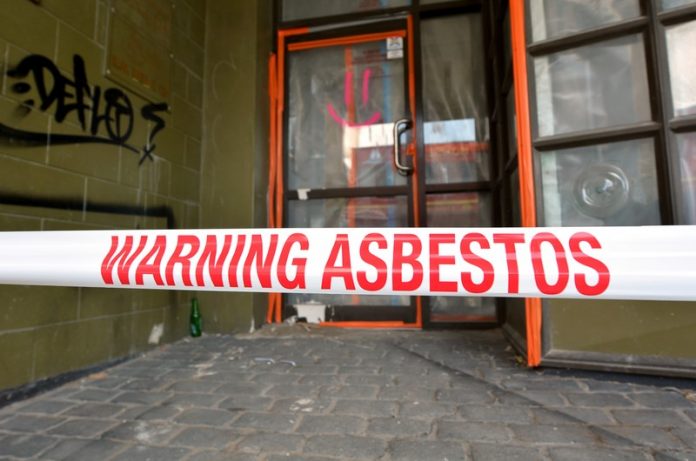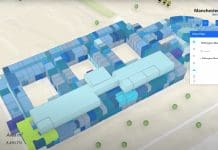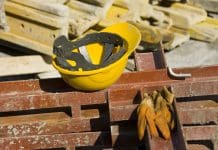Asbestos may have been long since banned in the construction of new buildings but exposure to this hazardous material is still a very real risk for many working in the industry. Louise Hosking, director of Hosking Associates, looks at how to manage that risk
Recent research conducted by the Institution of Occupational Safety & Health (IOSH) identified almost one in four construction workers believe they have been exposed to asbestos. The IOSH No Time to Lose campaign highlights the risks of occupational cancers to workers, with the most recent phase focusing on asbestos.
Almost a third (32%) of respondents to the survey still say they are not checking the asbestos register. Increasing amounts of work have been undertaken by organisations to ensure those they engage to work on their behalf provide documentation, risk and method statements (RAMS), and outline safe processes in advance. Inductions are becoming more common and there are more robust systems in place to warn anyone working on site what the hazards may be.
However, is this information being properly considered sufficiently early? It can be extremely difficult to get information in advance from some property owners. Obtaining information early means it can be used to potentially alter an approach to work, be properly incorporated into RAMs and considered by project managers before workers actually go to a new site.
In many cases, it is not until the induction when hazards are explained and those attending may not be in a position to make the changes needed to the approach to prevent potential exposure.
By knowing about asbestos in advance, the work plan can potentially be altered: rather than drilling, surface mounting can be used, or an entirely different work method considered.
Where work is subcontracted, obtaining information in advance can be more difficult when the contractor doesn’t have direct access to the person holding it. Even if workers know it should be considered, their focus on providing a good service and getting the work done becomes a stronger urge than checking available information.
Under the Control of Asbestos Regulations 2012, anyone who may come into contact with asbestos-containing materials (ACMs) should undertake asbestos awareness training. Many workers undertake this training via e-learning, which can be a useful tool, but it is important for supervisors and businesses to talk about it and reinforce what they know even if they have been through it many times before.
It is important everyone knows the right emergency response to take if damage to ACMs is suspected:
- Stop work immediately.
- If it is safe to do so, take a photo of the material.
- If there is a chance clothing may be contaminated with dust, leave it in the area.
- Leave the area where the potential exposure occurred but stay close by – if it’s on soles of shoes, contamination can spread to other areas.
- Call for assistance and make sure the area is labelled and locked off.
- Request sampling and further advice from an asbestos consultant.
- If material has been disturbed, work must not continue without confirmation the air is clear and a plan for dealing with the damage safely.
All potential accidental damage should be treated as a near miss and investigated internally to determine why it has occurred. Individuals should visit their GP if they have concerns.
Asbestos facts
Asbestos-containing materials (ACMs) may be located in any building that was built or refurbished before 2000.
If asbestos is intact and in good condition, it can be safely managed. As soon as asbestos is damaged, fibres are released into the air which can cause serious disease. Fibres cannot be seen, which is why asbestos is called the silent killer.
More people die of asbestos-related conditions in the UK (c5,000) than in road traffic accidents (c1,800). Under the Control of Asbestos Regulations 2012, there is a duty to identify where you might have asbestos in your premises.
For day-to-day building management, it’s your duty to ensure a competent person completes an asbestos management survey to locate it.
The guidance on undertaking surveys and approaches are regularly reviewed. Some material is in locations that are hidden or not immediately obvious. Management surveys are recommended every five years, depending on the nature of the building, its use and number of ACMs.
Once identified, a register from the survey can be created that identifies each ACM. This must be kept up-to-date following re-inspections, or if a material is removed, so the register is always current. This should be accessible for workers to review.
ACMs should be regularly checked to make sure their condition has not changed and there’s been no accidental damage. The frequency will depend on location and use of the area. These re-inspections should be at least annually. Following the re-inspection, the register may need to be updated.
Clear information must be provided to the relevant people to avoid ACMs being accidentally damaged during work, or normal occupation, before they start work and during their induction.
There should be an emergency procedure in place for responding to potential accidental damage that everyone is familiar with.
An asbestos management plan will describe your strategy for managing ACMs and this must be kept up-to-date. This plan is not the same as the survey; it describes the management arrangements around how it is controlled.
Labelling is not a legal requirement, but it is a good idea to provide a final warning to workers.
Before buildings are refurbished or demolished, a more detailed survey is required that breaks into the structure of the building. A management survey cannot be relied upon in isolation.
Even surveys might not identify all material, so relevant workers should attend annual asbestos awareness training.
If you have a landlord, the lease will state what your responsibilities are. If you are responsible for maintenance and repair, this will usually mean you are responsible for managing asbestos.
Occupiers, who are not responsible for maintenance or repair, also have responsibilities to make sure they do not damage areas they occupy if they contain ACMs. Asbestos can only ever be removed under strict conditions. Most removals can only be undertaken by licensed contractors.
Asbestos removal involves construction work and techniques, so Construction (Design & Management) Regulations 2015 also apply. In most cases, removal must be undertaken by a licensed contractor.
Once asbestos has been removed, waste must be carefully managed and only removed to a licensed waste facility. A consignment note should be obtained to detail the type of waste being removed, and where it is going.
Louise Hosking
MCIEH CMIOSH CMaPS PIEMA SIIRSM
Director at Hosking Associates
and IOSH vice-president
Institution of Occupational Safety & Health
Tel: +44 (0)116 257 3100
Twitter: @IOSH_tweets










![[VIDEO]What to expect when you’re inspecting: Using DorTrak for fire door inspections](https://www.pbctoday.co.uk/news/wp-content/uploads/2025/02/maxresdefault-218x150.jpg)



